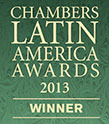On September 20, 2017, Hurricane María made landfall in Puerto Rico as a Category 4 hurricane. Since then, the federal assistance programs addressing the damage caused by Hurricane María – particularly those administered and managed by the Federal Emergency Management Agency (FEMA) – are entering a new stage. The following is a summary of recent developments as it pertains to the federal assistance programs currently offering disaster relief for damage caused by Hurricane María:
Public Assistance Alternative Procedures Pilot Program:
After Hurricane María, federal assistance to address damage caused to State and Municipal infrastructure in Puerto Rico has been provided mainly through FEMA’s Public Assistance Program (the “PA Program” - 44 CFR Part 206, Subpart G). This program authorizes FEMA to provide assistance to affected State and local governments for debris removal, emergency protective measures, and infrastructure repair/restoration measures, subject to a cost share between the federal government and the PA Program Applicant.
Initially, the assistance provided through the PA Program was limited to Emergency Work consisting of debris removal and emergency protective measures (known under the PA Program as Category A and Category B Work). However, the scope of assistance provided through the PA Program has been expanded to include Permanent Work (i.e., repairs, restoration, improvement and, in some cases, the replacement of infrastructure affected by a natural disaster under Categories C through G). The costs of Emergency Work is being assumed 100% by FEMA, while the costs related to Permanent Work will be subject to a 90%-10% cost-share between FEMA and the PA Program Applicant (i.e., the State or Municipal government). More recently, on November 2, 2017, FEMA notified the Government of Puerto Rico’s election to participate in the PA Program’s Alternative Procedures for Permanent Work (the “Alternative Procedures” also known as Section 428 of the Stafford Act).
The Alternative Procedures is a pilot program adopted by FEMA pursuant to the Sandy Recovery Improvement Act of 2013, which provides an expedited and flexible alternative for receiving PA Program awards for Debris Removal and Permanent Work. The Alternative Procedures differ from the FEMA’s procedures, which provide for funding the actual cost of completing the eligible scope of work. Under the Alternative Procedures, Applicants, including the Government of Puerto Rico, may receive PA Program awards for Permanent Work Projects (i.e., repairs, restoration, replacement, etc.) so long as they are performed in accordance to a “fixed cost estimate” agreed to by FEMA, the Recipient and the Subrecipient. However, once the fixed cost estimate is accepted and agreed on, the Applicant will be held responsible for any actual costs that exceed the estimate. When the actual cost of the work under a subaward is less than the fixed estimate, the Applicant may use the excess funds for PA program-related purposes, such as hazard mitigation activities and training and planning for future disaster recovery operations. The Alternative Procedures intends to provide Applicants an expedited procedure for acquiring federal assistance funds while at the same time reducing the costs to the Federal Government of providing assistance.
Additional Developments regarding Federal Assistance and Housing Resources:
In addition to the recent developments surrounding FEMA’s PA Program, On November 13, 2017, Governor Ricardo Rosselló Nevares requested Congress to approve an emergency supplemental appropriation bill granting up to $94.4 billion for disaster relief aid in Puerto Rico (the “Request for Federal Assistance”). If the request is granted, the largest portion would be assigned to the repair and construction of housing ($31.1 billion) and the restoration and improvement of the Island’s electrical power infrastructure ($17.8 billion). However, the requested amount would also provide assistance on matters regarding Health and Healthcare, Agriculture, Social Services, Economic Development, Communications Infrastructure, Roads and Bridges, Ports and Airports, Public Building Revitalization, Water and Water Control Facilities, Sanitary Sewer and Storm Drainage, Education and Schools, Environment and Natural Resources, Public Safety and First Response Coordination, and Long-Term Recovery Management and Coordination. The funding sources for the Request for Federal Assistance are FEMA’s Disaster Relief Fund ($30 billion), Community Development Block Grant – Disaster Recovery (CDBG-DR) ($46 billion) and $17.9 billion in other federal grant programs.
The request made for CDBG-DR funds increases the housing options and programs currently provided by FEMA and other federal agencies, among them: “Tu Hogar Renace,” Transitional Sheltering Assistance, Blue Roof Program, Direct Lease, Multi-Family Lease and Repair, Financial Assistance Available to Disaster Survivor for Housing Needs, Rental Assistance, Home Repairs, Other Needs Assistance, Low Interest Disaster Loans, Immediate Foreclosure Relief, Mortgage Insurance and Home Rehabilitation. Under CDBG-DR, a program administered by the US Department of Housing and Urban Development, projects can be developed to rebuild homes and infrastructure damaged by the disaster and to provide assistance to affected business owners, among others. As part of the housing opportunities that CDBG-DR allows are activities that lead to restoring and improving the housing stock, such as new construction, rehabilitation/reconstruction, single family or multifamily housing and owner or rental housing opportunities.
The content of this McV Alert has been prepared for information purposes only. It is not intended as, and does not constitute, either legal advice or solicitation of any prospective client. An attorney-client relationship with McConnell Valdés LLC cannot be formed by reading or responding to this McV Alert. Such a relationship may be formed only by express agreement with McConnell Valdés LLC.







